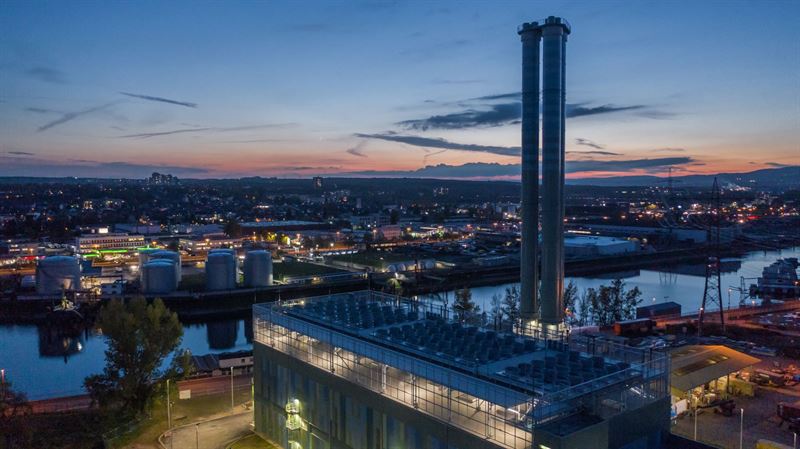District heating: the key to affordable and flexible decarbonised energy, says new study
District Heating: Europe's Path to Affordable and Clean Energy

District Heating Could Be the Key to Europe’s Clean Energy Future
A new study by Wärtsilä, a global technology company, shows that district heating could play a big role in helping Europe reach its climate goals without breaking the bank. Right now, district heating only supplies 11% of Europe’s homes, but this study reveals it has the potential to do much more. If Europe upgrades its district heating systems, it could lower carbon emissions and use more renewable energy, moving away from outdated coal-fired systems.
Why District Heating Matters
District heating is a system where heat is made in a central location, like a power plant, and then sent to homes and buildings through insulated pipes. This way, people get warm houses and hot water without needing individual boilers in every home. What’s special about district heating is that it can use many different sources of low-carbon energy, such as geothermal energy, heat pumps, and even leftover heat from factories.
Cleaner Heating Means Lower Emissions
The study, conducted by consulting firm Compass Lexecon, shows that switching from coal-fired systems to modern district heating could help Europe cut a lot of emissions. In 2022 alone, coal power plants and old heating systems in Europe released almost 450 million tons of CO2, which is 60% of the sector’s total emissions. Using district heating can help solve this problem by allowing homes and power systems to work together to make heat and electricity in a cleaner way.
The Role of CHP Engines
A key technology for making district heating work better is Combined Heat and Power (CHP) engines. These engines create both heat and electricity at the same time, making them very efficient. In Poland, for example, Wärtsilä’s research suggests that using CHP engines and other flexible systems could save the country €3.8 billion over the next decade. This would also cut carbon emissions by 57% in the coal-heavy power sector by 2032.
“CHP engines are a smart choice because they adjust to market needs,” says Igor Petryk, Market Development Director at Wärtsilä Energy. “They can switch between making heat or electricity depending on what’s needed, helping to keep energy reliable and affordable.”
How Countries Are Using District Heating
Different countries are already showing how district heating can make a difference. Here are some examples:
- Denmark (Skagen): Denmark uses a mix of CHP engines, heat pumps, and electric boilers to provide heat and power. This flexible setup helps balance energy supply based on what the market needs.
- Poland (Grudziądz): In Poland, old coal-based systems are being replaced with cleaner alternatives like CHP engines and heat storage, leading to a big drop in emissions.
- Hungary (Zuglo): Hungary’s district heating system shows how CHP engines can support both electricity generation and grid stability.
- Czech Republic: Thanks to government subsidies, the Czech Republic is rapidly adopting natural gas-fired CHP engines, replacing coal with cleaner solutions.
ILO 92 – International Labour Conference (ILO) Convention No. 92
Why Government Support Is Important
Governments play a crucial role in making district heating work. For example, the Czech Republic has special funding to encourage cleaner energy projects. In Hungary, there’s a market that rewards systems that help keep the power grid stable. These kinds of supports make it easier for countries to switch to district heating and move away from coal.
What’s Next for District Heating in Europe?
As Europe aims to cut emissions, district heating could be a big part of the solution. The EU has regulations that promote cleaner energy, but each country needs to make its own policies to support district heating projects. With the right rules and investments, district heating can provide Europe with a greener, more affordable energy future.
Gerald Aue, Vice President of Compass Lexecon, says, “Our study shows that CHP engines can help fight climate change by replacing coal. They are also recognized by the EU as a sustainable choice under certain conditions.”
A Quick Guide to District Heating and CHP Engines
- District Heating: A system that sends heat from a central source to homes using insulated pipes. It’s flexible because it can use many low-carbon sources like geothermal, industrial waste heat, and heat pumps.
- CHP Engines: These are special engines that make both heat and electricity at the same time. They use the heat that is usually wasted during power generation, making them very efficient.
Conclusion
District heating is more than just a way to keep houses warm—it’s a flexible tool for cutting carbon emissions and supporting renewable energy. With the right investments and policies, it could help Europe meet its climate goals faster and more affordably.
